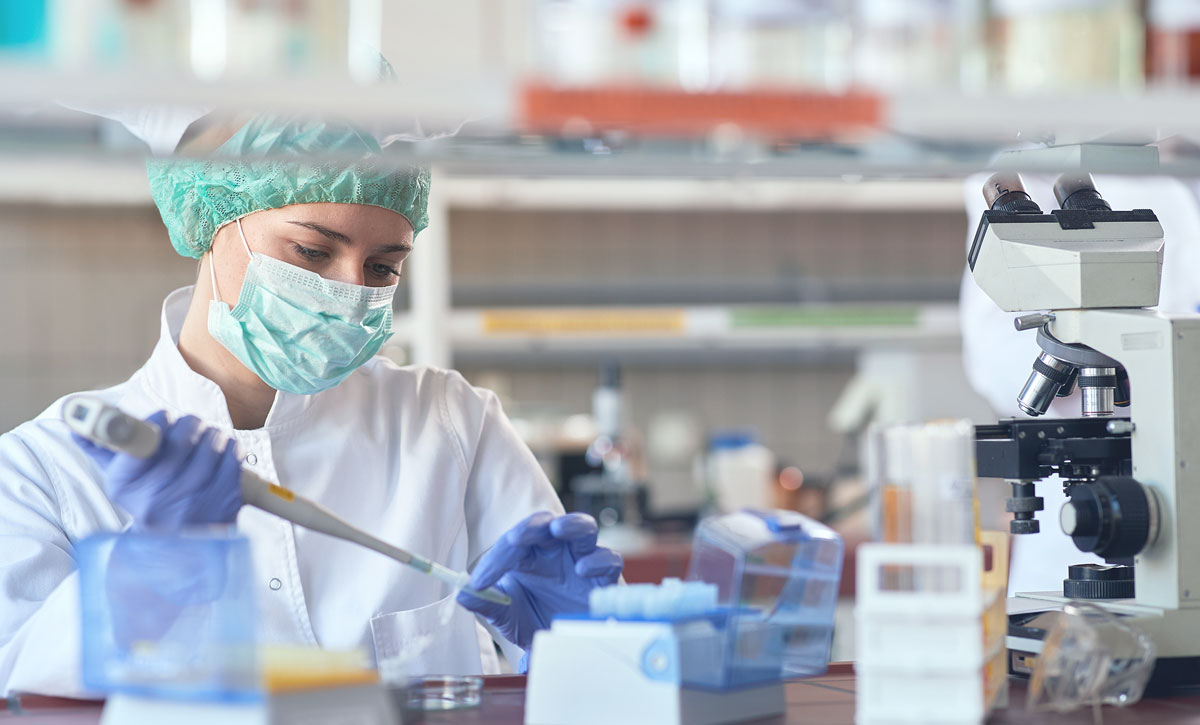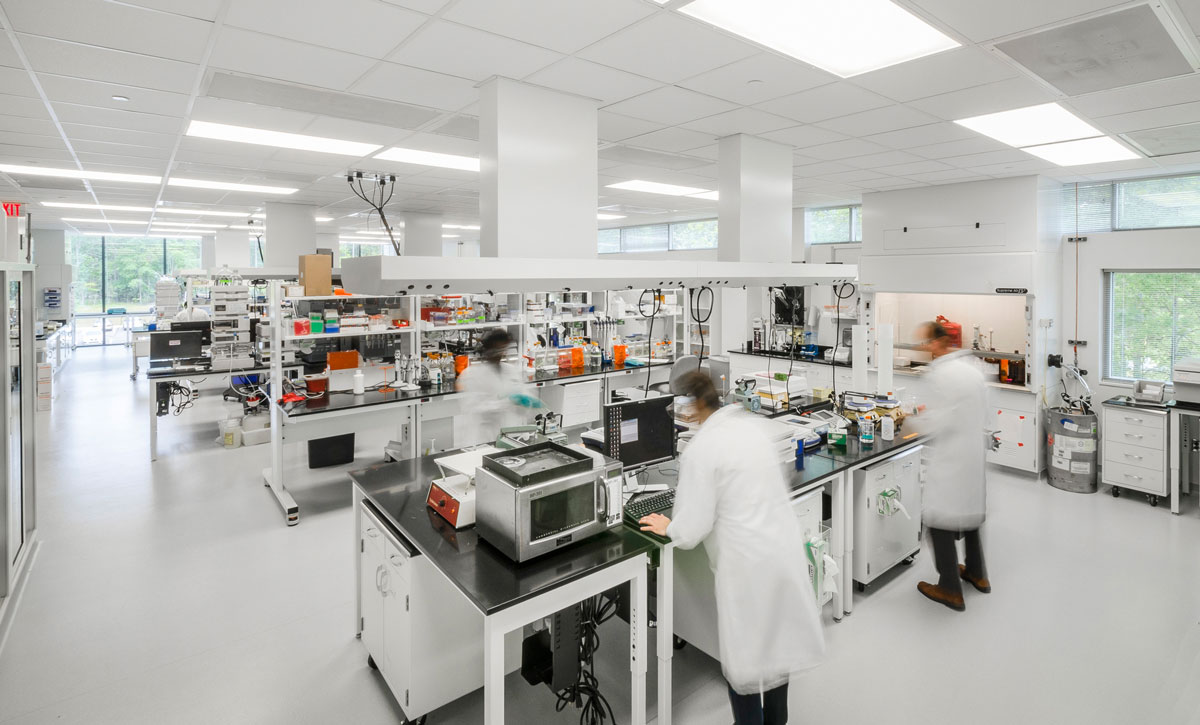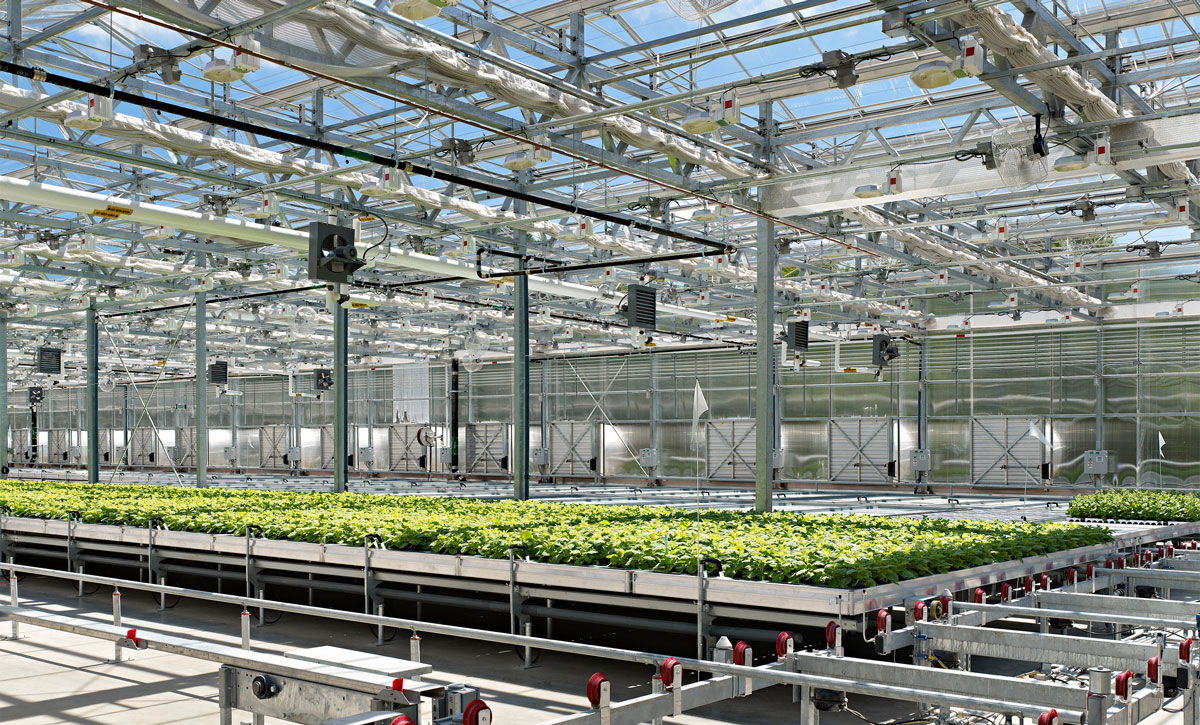The Impact of S+T Facility Design on COVID-19 Research
 The COVID-19 pandemic has emerged as one of the most pressing issues of our time. Accordingly, pharma and biotech companies have pivoted to researching cures, vaccines, and supportive medicine to address this global crisis. We already know that facility design of all types has an impact on the occupant experience – from workplace productivity to mental well-being – but what specifically makes a research or production environment most effective? In the following, Clark Nexsen’s Don Kranbuehl looks at S+T facilities designed for Medicago and FUJIFILM Diosynth Biotechnologies as case studies for how design helps researchers combat health crises like COVID-19.
The COVID-19 pandemic has emerged as one of the most pressing issues of our time. Accordingly, pharma and biotech companies have pivoted to researching cures, vaccines, and supportive medicine to address this global crisis. We already know that facility design of all types has an impact on the occupant experience – from workplace productivity to mental well-being – but what specifically makes a research or production environment most effective? In the following, Clark Nexsen’s Don Kranbuehl looks at S+T facilities designed for Medicago and FUJIFILM Diosynth Biotechnologies as case studies for how design helps researchers combat health crises like COVID-19.
The FUJIFILM Diosynth Biotechnologies’ Bioprocess Innovation Center made national news recently when the president visited the facility to witness firsthand some of the most cutting-edge research on vaccines for COVID-19. Novavax has taken over three floors of lab space in the facility to expedite its vaccine research and development process. In an article from MSN, Novavax CEO Stanley Erck notes the importance of speed and capacity in producing enough doses for the phase 3 clinical trials, which will test safety and efficacy on 30,000 people.
Rapid adaptability is the result of open workspaces, flexible casework, a workflow that allows for seamless circulation, and a logical organization and sequencing of labs throughout the building.
The design attributes that most distinguish the Bioprocess Innovation Center are workflow and flexibility. In working with FDB stakeholders to design the facility, their priority as a leading contract development and manufacturing organization (CDMO) was creating a highly adaptable environment that could rapidly accommodate varying types of pharmaceutical research. As a result, the size and flexibility of the center’s labs makes them well-suited to advancing Novavax’s vaccine candidate for COVID-19, as well as other types of R&D. This rapid adaptability is the result of open workspaces, flexible casework, a workflow that allows for seamless circulation, and a logical organization and sequencing of labs throughout the building.

Flexibility is maximized at the Bioprocess Innovation Center using overhead service carriers and casework on rollers.
Another Clark Nexsen-designed facility, Medicago’s Research Triangle Park location, is also playing a role in advancing COVID-19 research with a vaccine candidate in phase 1 clinical trials. Medicago is a leader in plant-based vaccine technology and has demonstrated their potential to be a first responder to pandemic situations with their work in quickly developing vaccine candidates for both H1N1 influenza and Ebola, according to their website. The company’s RTP complex includes a 10,000m2 cGMP facility with a fully automated greenhouse and a state-of-the-art extraction and purification unit and currently produces vaccines for clinical studies.

A research greenhouse at Medicago’s RTP facility.
The facility’s design prioritized flexibility for vaccine production and distribution, creating an efficient workflow. It includes germination space, sterilization rooms, incubation/harvesting stations, several laboratories with all necessary pieces of equipment and lab centrifuges, a BSL-2 cleanroom space, along with office, storage, process, production, and mechanical spaces. Accommodating future growth and new experiments was a central goal.
In my work, I’ve repeatedly seen that workflow and flexibility are key priorities in commercial and academic S+T design. It is all about designing the most efficient and functional lab that can accommodate world-class research and ultimately lead to innovative results. Circulation flow and flexibility are central to the success of any good research environment.
A secondary factor we always consider is how to work within the circulation and function to create spaces for researchers to gather, collaborate, and socialize. The interactions taking place in those spaces often spark new ideas and insights. In the design process when we think about materiality and siting, I also prioritize access to natural light and views to the outdoors. Together, elements like daylighting and social spaces are important parts of fostering an engaging environment. If we expect these scientists to protect the well-being of the global population, we need to look out for theirs, too.
Don Kranbuehl, FAIA, LEED AP BD+C is a principal and leader of Clark Nexsen’s Science + Technology practice. He led the design of the Bioprocess Innovation Center for FUJIFILM Diosynth Biotechnologies and the Coastal Studies Institute for the UNC System, among other significant projects. To speak with Don, please call 919.828.1876 or email dkranbuehl@clarknexsen.com.
